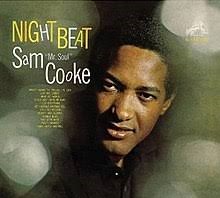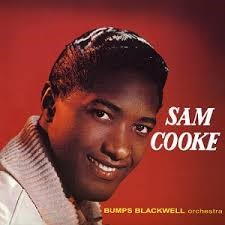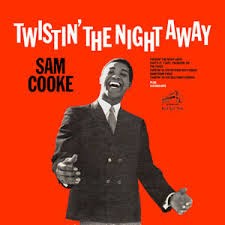Five of the best from Sam Cooke
Five of the best from Sam Cooke
- Ain't That Good News (1964) - This was Cooke's final studio album released during his lifetime and is often considered one of his best. It includes the iconic hit "A Change Is Gonna Come."
- Night Beat (1963) - This album is highly regarded for its intimate, blues-oriented sound and is often cited by critics as one of Cooke's finest works.
- Sam Cooke (1958) - His self-titled debut pop album was a significant success, helping to establish him as a crossover star from gospel to secular music.
- Twistin' the Night Away (1962) - The title track became one of Cooke's biggest hits and helped cement his reputation as a pop star.
- Live at the Harlem Square Club, 1963 (1985) - While released posthumously, it's considered one of the greatest live albums of all time and showcases Cooke's incredible live performance skills.
1. Ain't That Good News (1964)

Sam Cooke's final studio album, "Ain't That Good News," released in 1964, is a testament to his musical genius and social consciousness. This soul and R&B masterpiece showcases Cooke's evolution as an artist, blending his signature smooth vocals with more socially aware lyrics. The album features the groundbreaking civil rights anthem "A Change Is Gonna Come," which became an enduring symbol of the 1960s civil rights movement.
Cooke's ability to infuse pop sensibilities with gospel roots is evident throughout the record, creating a sound that influenced generations of musicians. The album's production quality and arrangements demonstrate Cooke's growth as a recording artist, with lush orchestrations complementing his performances.
"Ain't That Good News" solidified Cooke's status as a soul music pioneer and marked a turning point in his career, showcasing his ability to create commercially successful and socially impactful music. Tragically, it would be his last album before his untimely death later that year.
2. Night Beat (1963)

"Night Beat," released in 1963, is a critically acclaimed album that showcases the soul singer's intimate and bluesy side. This collection of songs highlights Cooke's versatility as an artist, moving away from his pop hits to explore a more raw and emotional sound. The album features stripped-down arrangements, allowing Cooke's powerful voice to take center stage.
Focusing on blues and soul standards, "Night Beat" demonstrates Cooke's deep connection to his musical roots. The record's late-night atmosphere and introspective mood set it apart from his more upbeat releases, appealing to fans of classic R&B and soul music. "Night Beat" is often considered one of Cooke's finest artistic achievements, showcasing his ability to convey deep emotion through his vocals.
The album's influence can be heard in the work of numerous soul and R&B artists who followed, cementing its place as a touchstone in the genre's history.
3. Sam Cooke (1958)

Sam Cooke's self-titled debut album, released in 1958, marked his transition from gospel to pop music and launched his career as a solo artist. This groundbreaking record introduced Cooke's smooth, soulful voice to a wider audience, blending elements of R&B, pop, and his gospel roots. The album showcases Cooke's exceptional vocal range and ability to infuse emotion into every lyric.
With its mix of original compositions and covers, "Sam Cooke" demonstrates the singer's versatility and appeal across multiple genres. The record's success helped pave the way for future African American artists in the mainstream pop market. Cooke's unique style, combining gospel-inspired vocals with pop sensibilities, influenced countless musicians and helped shape the sound of soul music.
The debut album established Sam Cooke as a rising star and laid the foundation for his future success and enduring legacy in the music industry.
4. Twistin' the Night Away (1962)

"Twistin' the Night Away," released in 1962, captures the vibrant energy of the early 1960s dance craze. This album showcases Cooke's ability to blend his soulful vocals with upbeat, rhythmic pop tunes, solidifying his crossover appeal. The title track became one of Cooke's biggest hits, climbing the charts and cementing his status as a pop icon.
Through the whole album, Cooke's smooth delivery shines, whether he's tackling upbeat dance numbers or soulful ballads. "Twistin' the Night Away" demonstrates Cooke's versatility as an artist, appealing to both R&B and pop audiences. The record's production quality and arrangements reflect the evolving sound of early 1960s popular music, blending elements of soul, R&B, and rock and roll.
This album showcases Cooke's commercial success and his influence on the developing soul genre, helping to shape the sound of popular music in the 1960s and beyond.
5. Live at the Harlem Square Club, 1963 (1985)

"Live at the Harlem Square Club, 1963" is a posthumously released live album by Sam Cooke, recorded in Miami and released in 1985. This energetic performance captures Cooke at the height of his powers, showcasing a more passionate side of the artist than his polished studio recordings. The album provides listeners with an intimate glimpse into Cooke's electrifying stage presence and his ability to connect with a live audience.
Featuring stirring renditions of his hits, the record demonstrates Cooke's mastery of high-tempo numbers and heartfelt ballads. The intimate club setting allows Cooke's powerful vocals to shine, backed by a tight rhythm section that perfectly complements his dynamic performance. This live album was praised by critics and fans for its authenticity and intensity, contrasting Cooke's more restrained studio work.
"Live at the Harlem Square Club, 1963" is considered one of the greatest live albums in soul music history, cementing Cooke's legacy as a phenomenal live performer and influential figure in the development of soul and R&B.
Recent Posts
Queen studio albums: A Review
Phil Collins Albums Ranked & Reviewed – Complete Guide to Every Studio Album
The best of Massive Attack
Let’s Make Magic
Book Your Event DJ Now




